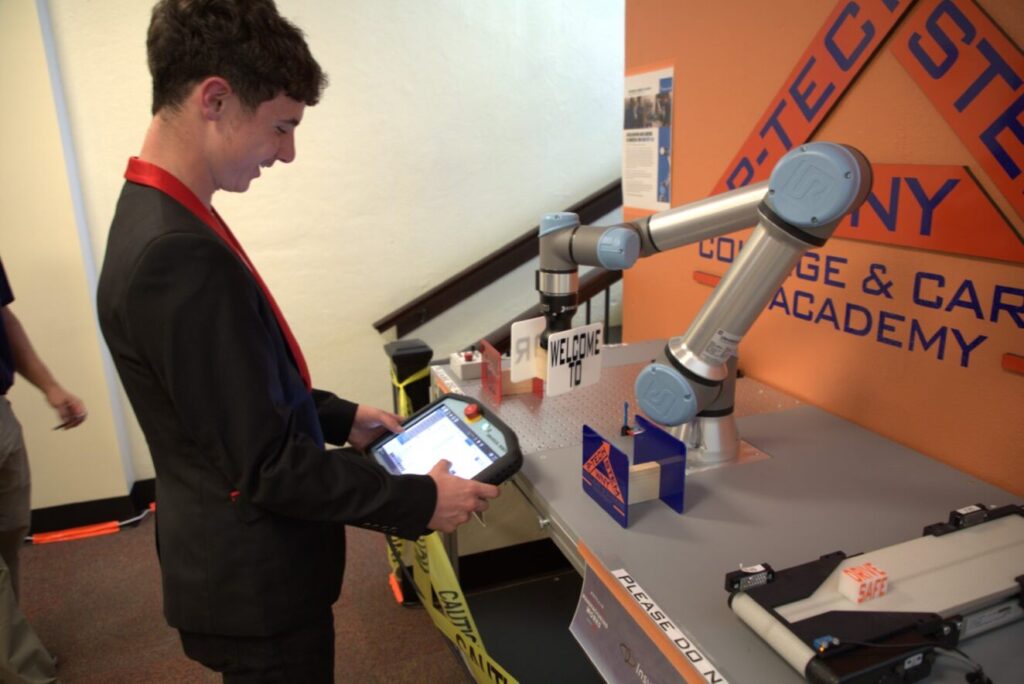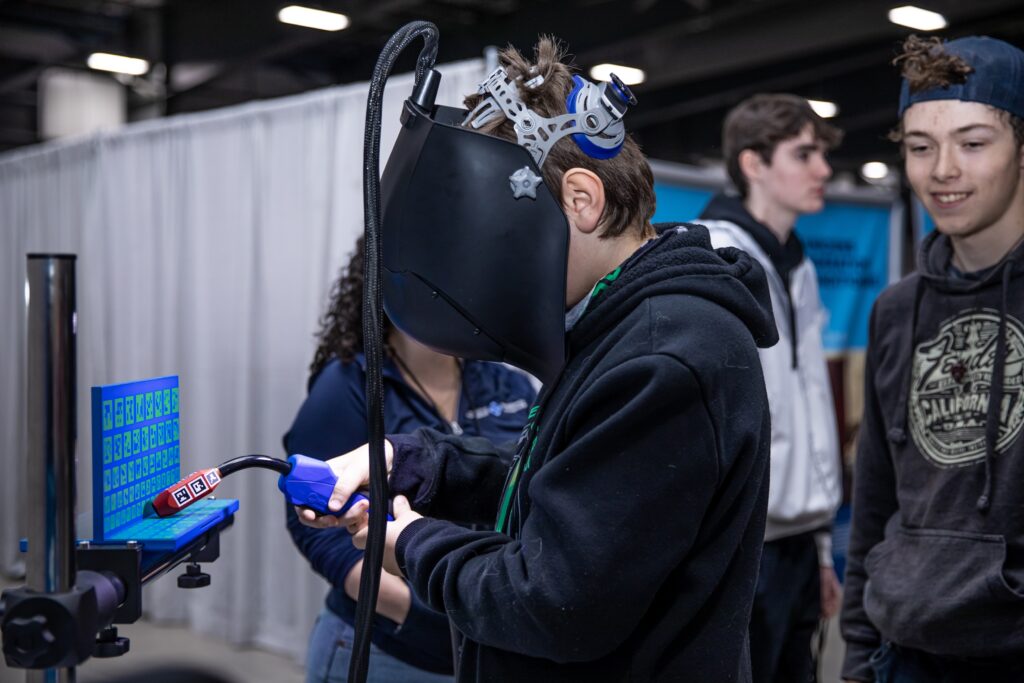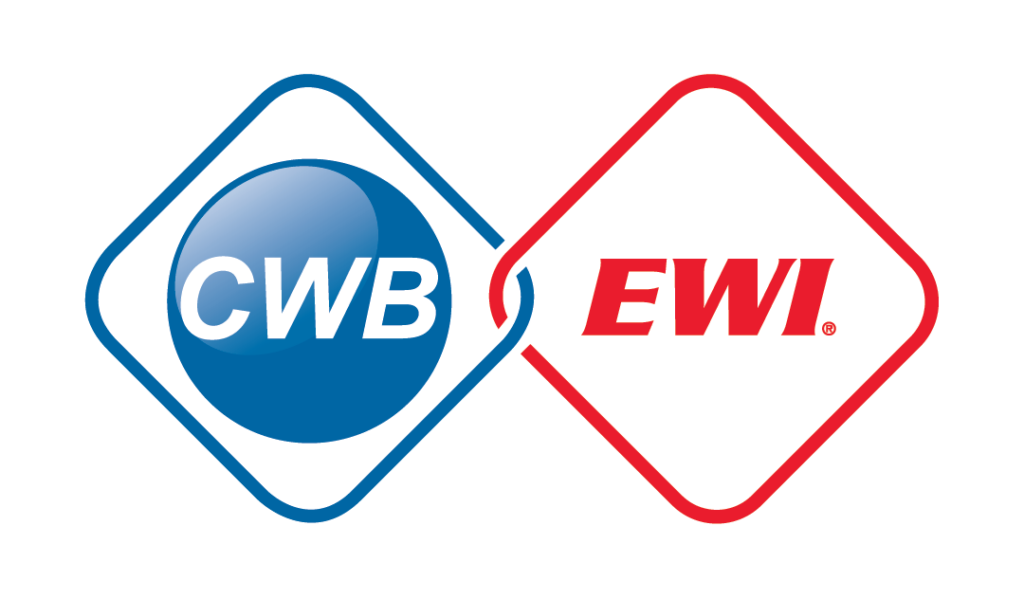
The Innovation Edge
Investing Early in an Industry- and Innovation-ready Workforce
Susan Witt, Manager, Industrial Training — EWI
Sarah Dingman, Marketing and Communications Manager — CWB Foundation
The North American innovation ecosystem is a dynamic network of interaction and collaboration among entrepreneurs, investors, industry, governments, research centers, and educational institutions. Universities and colleges in particular play a key role in developing tomorrow’s innovative minds and filling the talent pipeline.
But let’s not discount the role high schools play in equipping students with the interest, curiosity, and skills to make innovation possible.
Technology is evolving faster and faster, and the global race for innovative solutions has never been more critical. A strong innovation ecosystem is essential to competitiveness and productivity because it creates the conditions for technological advancements to develop.
At the same time, the skilled labor shortage and imminent surge in baby-boomer retirements are hindering North American economic growth, especially in construction and manufacturing sectors.
With stakes this high, we can’t afford to wait until students get to college to develop them into the innovators of tomorrow. In fact, with college being just one option for youth, reaching students earlier is imperative.
Early exposure to innovation supports a future skilled workforce
Let’s consider this in the context of the welding and materials joining industry. We need to get youth excited about opportunities in welding and related professions – as well as opportunities in STEM fields that support manufacturing and the North American supply chain – and we need to give them the right skills to succeed.
Bringing innovation directly to high school students is the clear path. However, challenges exist. High schools don’t always place a high priority on trades and technology education, so there is a lack of funding for fully equipped labs. This means, for example, that educators don’t have access to cutting-edge equipment and tools to encourage technologically minded youth to try their hand at welding. Even with the equipment, educators might not be trained in the use of those tools or their application in a real-world context.
There are amazing innovations being introduced to industry across North America, like tele-welding, cobots, and robotics, but these innovations aren’t necessarily reaching high school students or capturing their interest.
This issue goes beyond welding. Exposure to innovative educational tools and innovative technology shines a spotlight on opportunities within STEM fields, motivating students to develop the skillset for tomorrow’s industrial landscape.
We need to ensure young people are both industry-ready and innovation-ready. While education and training systems work to embed innovation in curriculum and teaching methodologies, we as an industry can get a jumpstart on tomorrow by looking beyond the school system, to organizations that are already finding solutions to these challenges.
Here are two examples – EWI’s automation program for high school students, and the CWB Foundation’s welding simulator program.
Igniting student excitement for robotics and automation
Manufacturers in Western New York want to implement automation solutions, but the workforce skills gap is a barrier. Thanks to a generous grant from the Economic Development Administration (EDA) and Empire State Development Corp (ESD), EWI developed an automation program that introduces students to the fundamental concepts of collaborative robots.

The program is designed to ignite student engagement with the world of robotics and improve STEM literacy while cultivating creative thinking through a fun and experiential learning environment. The class is a mixture of lecture and hands-on labs, which are taught on state-of-the-art equipment designed by EWI’s experts. At the end of the course, students can sit for the UR Core Exam and earn an industry-recognized certificate.
The program is finishing its pilot year, and successes include 100% retention of students who originally signed up. Students have also been eager to access the cobot cells before and after school so they can practice their programming skills. They are engaged and motivated to finish the program and sit for the industry exam at the end of May. The program will continue with a summer camp for high school students in the Buffalo Public School District.
Simulators spark interest in welding and related trades
Welding simulators help to bridge the gap between theoretical knowledge and practical application, enhancing overall learning outcomes and preparing students with the latest industry techniques.
The CWB Foundation has a network of Trusted Partners – school boards, colleges, and training centers – that use simulators in their facilities and report back on the impact. Educators and administrators value simulators because they make the training available to all kinds of learners. The Foundation also brings simulators to career fairs to connect directly with youth and loans the equipment out to Chapters of the CWB Association.
Simulators make use of virtual and augmented reality so students can develop their skills in a safe, risk-free environment. They can be customized to individual skill levels, and users gain real-time feedback on their progress. The use of simulators helps to cut costs for schools by eliminating the need for consumables, bringing them within reach of more students.

welding simulator at career fair.
Importantly, simulators spark an interest in welding and related trades and professions in a way that is accessible and appealing to youth, as well as to their parents.
Over the past 12 months, Foundation simulators were used at 48 events across Canada, engaging more than 6,700 simulator users. The simulator program is made possible by the CWB Group and generous corporate donors.
Creating conditions for innovation to flourish
Alan Kay, an American computer scientist, once said, “The best way to predict the future is to create it.” We are seeing groundbreaking efforts to create the conditions for innovation to flourish. Engaging youth early on in their educational journey will support businesses in filling the skills gap between today’s workforce and what is needed in the future to leverage innovation and support North American industry.
In 2022, EWI, of Columbus, Ohio, and CWB Group, of Milton, Ontario, announced a strategic alliance to serve and promote materials joining and allied technology services (MJATS) in Canada, the United States, and beyond. Unified in their mission, CWB, EWI, and the CWB Foundation work to advance workforce development, champion public safety, and deliver innovative and meaningful solutions that contribute to a strong economy and a better world.

Learn more:
cwbgroup.org | ewi.org | cwbweldingfoundation.org